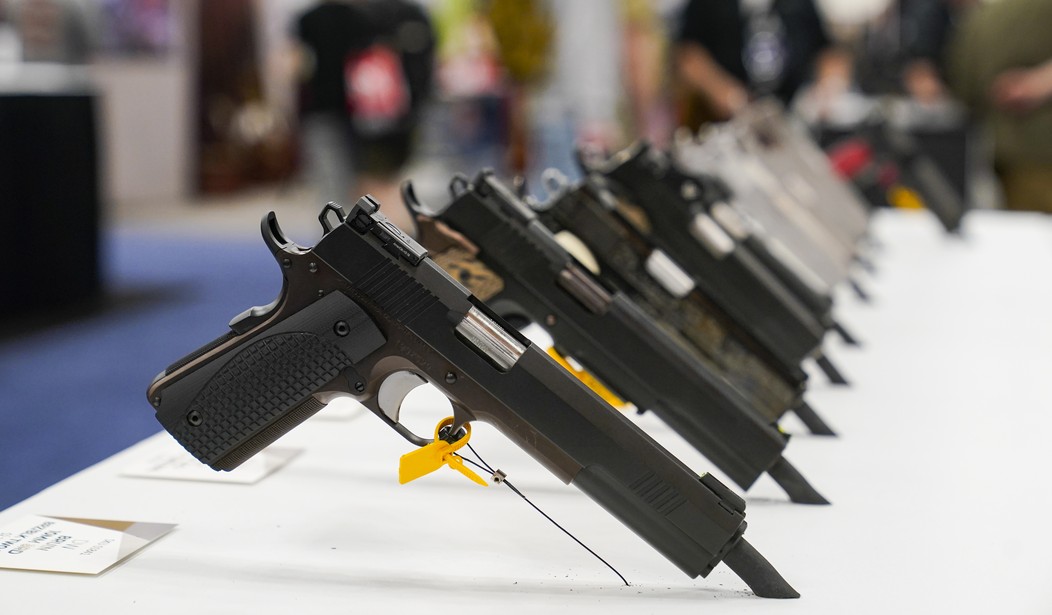The script is well-known and tiresome to all sides.
First, something terrible happens involving a gun. Then anti-gun activists and lawmakers demand something be done to prevent this terrible thing from happening again. Pro-gun lawmakers hold the line, making anti-gunners upset as they scream about the other side not taking the issue seriously.
We've seen it play out a thousand times over the years.
We're sick of it and they're sick of it, though for very different reasons. For gun control advocates, the fact that it doesn't work bothers them. For us, the lack of reality being considered is what makes it so tiresome.
A prime example of this was in the aftermath of the Kansas City parade shooting. Sure enough, the dust hadn't even settled before the usual suspects were demanding gun control. They were prepared to blame the lack of it in either pro-gun Missouri or pro-gun Kansas at the drop of a hat.
Yet a recent op-ed took issue with this notion, arguing that the reality is that gun control wasn't the issue.
A sign of a hurried and ineffective response is the Democratic legislative proposals in both Kansas and Missouri that would have done nothing to head off February’s tragic events at the station. Among the ideas that would have done nothing are “red flag” laws intended to get guns out of the hands of people with mentally illness and safe storage laws meant to keep guns under lock and key. No evidence points to mental health or storage issues as a cause of the gunfire at the Chiefs rally.
Other proposals might have done something — such as reviving permit requirements for concealed carry or allowing cities to have their own strict gun regulations, but even that is questionable. Among the dozen people who drew firearms in the bloody skirmish over unfriendly looks outside Union Station, at least half of them already face charges for violating what few state and federal laws that already regulate the sale and possession of guns.
It is a sure bet that those who ignore our current laws aren’t going to be suddenly pushed into compliance by passing more.
This shouldn't be difficult to comprehend, but it's also completely ignored by gun control advocates and the media during their pushes. They don't address it at all, simply ignore it as if that's all there is to it.
Yet the author, David Mastio, doesn't leave it there.
After all, it's not like a single shooting is the totality of the gun debate. Yet in the broader discussion, reality is often ignored. For example, we're still being told we need a new assault weapon ban because of things like mass shootings. There's just one problem. Mass shootings are actually declining.
I talked to professor James Alan Fox, a criminologist at Northeastern University who tracks the deadliest mass killings in a database for USA Today. According to him, as of June 1, such deadly incidents have fallen by more than half, from 24 at this time in 2023 to only 11 so far this year.
Even by the measure favored by gun control groups, which track shootings that injure at least four people, but don’t necessarily kill anyone, such incidents are down this year by more than a quarter, he says. More than half of the mass shootings they track leave nobody dead, and as a result get little national coverage.
Fox calls it Newton’s Law of Crime Statistics: “What goes up, must come down. Just like the homicide rate more generally, spikes in mass shootings tend to be followed by corrective declines.”
Most people aren't aware of that kind of decrease, either. That doesn't make the news, in part because "if it bleeds, it leads." A lack of bleeding is kind of the opposite of what leads, according to the old journalist mantra.
Then we have the journalistic alarmism about those mass killings.
Fox argues that what happens in a lot of cases is that journalists cite a specific example of a mass murder--let's take Uvalde or Parkland, as an example--and then cite numbers from the Gun Violence Archive, which is the source mentioned above that requires no fatalities to be counted as a mass shooting.
By doing this, journalists trick people's minds into conflating the shootings. Here's this awful mass murder that we're calling a mass shooting and here are these other things that aren't remotely on the same scale we're also calling a mass shooting. The truth is that most people lack the critical thinking skills to recognize the difference.
Again, reality is missing.
Why do this? Well, as Mastio notes, a shooting like the one at the Kansas City Chiefs victory parade wouldn't have been prevented by gun control laws, yet it's high profile enough that activists and anti-gun lawmakers figure they can leverage it to push for rules and regulations they wanted all along.
But again, reality doesn't really support the narrative, so they just ignore it.
This is how it goes, time and time again, then these same people pretend you are ignoring reality as they try to gaslight you.
Lovely people, aren't they?








Join the conversation as a VIP Member